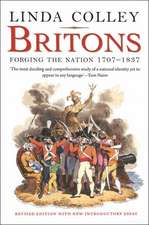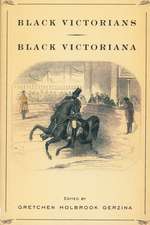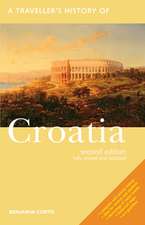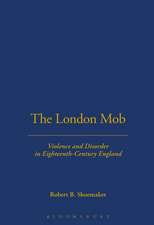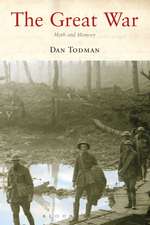The Balfour Declaration: The Origins of the Arab-Israeli Conflict
Autor Jonathan Schneeren Limba Engleză Paperback – 31 iul 2011
Jonathan Schneer explores the story behind the declaration and its unforeseen consequences that have shaped the modern world, placing it in context paying attention to the fascinating characters who conceived, opposed and plotted around it - among them Lloyd George, Lord Rothschild, T.E. Lawrence, Prince Faisal and Aubrey Herbert (the man who was ‘Greenmantle'). The Balfour Declaration brings vividly to life the origins of one of the world's longest lasting and most damaging conflicts.
| Toate formatele și edițiile | Preț | Express |
|---|---|---|
| Paperback (2) | 82.54 lei 3-5 săpt. | +41.54 lei 6-10 zile |
| Bloomsbury Publishing – 31 iul 2011 | 82.54 lei 3-5 săpt. | +41.54 lei 6-10 zile |
| Random House Trade – 31 dec 2011 | 137.10 lei 3-5 săpt. |
Preț: 82.54 lei
Preț vechi: 108.14 lei
-24% Nou
15.80€ • 16.18$ • 13.14£
Carte disponibilă
Livrare economică 26 februarie-12 martie
Livrare express 11-15 februarie pentru 51.53 lei
Specificații
ISBN-10: 1408809702
Pagini: 472
Ilustrații: Illustrations, ports.
Dimensiuni: 129 x 198 x 28 mm
Greutate: 0.39 kg
Editura: Bloomsbury Publishing
Colecția Bloomsbury Paperbacks
Locul publicării:London, United Kingdom
Caracteristici
Notă biografică
Jonathan Schneer was born in New York City. He earned his BA from McGill University and his PhD from Columbia University. He has taught at Boston College and Yale University and is currently the professor of modern British history at the Georgia Institute of Technology. He has held numerous fellowships in the US and UK and is the author of five previous books, most recently London 1900: The Imperial Metropolis and The Thames. He lives in Atlanta, Georgia.
Recenzii
'Jonathan Schneer's lively new account is very much a tale for our times ... his book is interspersed with delightful vignettes'
'Why did Britain offer the Jews a home in Palestine? Had they not already offered Palestine to the Arabs, two years earlier? This extraordinarily well-documented and revealing book gives the answers'
Descriere
In the middle of the First World War, the British War Cabinet approved and issued a statement in the form of a letter that encouraged the settlement of the Jewish people in Palestine. Signed by the Foreign Secretary Arthur Balfour, the Balfour Declaration remains one of the most important documents of the last hundred years.
Jonathan Schneer explores the story behind the declaration and its unforeseen consequences that have shaped the modern world, placing it in context paying attention to the fascinating characters who conceived, opposed and plotted around it - among them Lloyd George, Lord Rothschild, T.E. Lawrence, Prince Faisal and Aubrey Herbert (the man who was ‘Greenmantle'). The Balfour Declaration brings vividly to life the origins of one of the world's longest lasting and most damaging conflicts.
Extras
Chapter One
Palestine Before World War I
the land called palestine gave no indication, early in the twentieth century, that it would become the world’s cockpit. Rather, if anything, the reverse. A century ago it was merely a strip of territory running along the east coast of the Mediterranean Sea. The remote, sleepy, backward, sparsely populated southwestern bit of Syria was still home to foxes, jackals, hyenas, wildcats, wolves, even cheetahs and leopards in its most unsettled parts. Loosely governed from Jerusalem in the south and from Beirut in the north by agents of the Ottoman Empire, Palestine’s borders were vague. To the east it merged with the Jordanian plateau, to the south with the Arabian deserts, and to the north with the gray mountain masses of Lebanon. And it was small: Fewer than two hundred miles long and fifty miles wide, it was not much bigger than present-day Massachusetts (to put it in an American context) and about the size of Wales (to put it in the British).
The strip of land, resting mainly upon limestone, was devoid of coal, iron, copper, silver, or gold deposits and lacked oil, but it was happily porous (“calcareous,” the geologists said), meaning that it was capable of absorbing moisture whenever the heavens should open, which they might do, especially when the wind came from the north. When it came from the east, however, as it frequently did in May and October, the wind was a malign enervating force. It was a furnace-blast sirocco in hot weather and a numbing chill in cold. The two mountain ranges that ran in rough parallel the length of the country from north to south could not block it. The western range, which includes “the Mount of the Amorites” of the Book of Deuteronomy, runs between the Jordan Valley (to its east) and the maritime plain (to its west). The eastern edge of this range is an escarpment that drops (precipitously in places) to the fabled Jordan River below. The second or eastern range of hills, which include the mountains of Moab, Judea, and Galilee, is a continuation of a chain that begins in Lebanon and reaches southward into Jordan. To its west lies the river valley; to its east is a desert plateau. In the north of the country the mountains are quite tall: Mount Hermon rises more than 9,200 feet above sea level. (People ski there in winter now.) To the south the mountains are typically half as high, and the surrounding landscape is bleak, empty, and inhospitable.
For such a tiny land, Palestine contains extraordinary topographical contrasts. The Jordan River runs southward along a descending valley floor, passing some seventy miles from the clear waters of the Sea of Galilee, where the surrounding hills and fields are relatively green, welcoming, and fruitful. It empties into the brackish bitter Dead Sea, thirteen hundred feet below sea level, where the landscape is barren, freezing during winter, broiling in summer. In the Dead Sea area the Jordan Valley has never been cultivated, although at the turn of the twentieth century the wandering Bedouins might camp there. Even they, however, would move on during the hottest months, when temperatures scale 120 degrees Fahrenheit or higher and the land opens in cracks and fissures.
Elsewhere in Palestine, however, life flourished. “It drinketh of the rain of heaven,” Moses is supposed to have said of his “Promised Land,” and although it did not drink deep (rainfall averaged 28 to 32 inches annually, except in the south, where 6 inches marked a good year), and it rarely drank at all from March until November, nevertheless it drank sufficiently. Parts of the country were nearly luxuriant. In 1869 even that American innocent abroad, Samuel Clemens, whose wonderfully dyspeptic view of Palestine is legendary, could refer without irony to groves of lemon trees, “cool, shady, hung with fruit,” by the village of Shunem near “Little Hermon,” and to “breezy glades of thorn and oak,” south of the Sea of Galilee near Mount Tabor. A horseman riding the Hauran plateau, east of the eastern mountain range, could view unbroken wheat fields extending to the horizon on every side. A British visitor to the Circassian village of Gerasa was reminded “of a Scotch glen, though the hills are not so high nor the land so barren.” Local markets sold a diverse range of fruits and vegetables, some of remarkable size. “We have cauliflowers that measure at least a foot across, and water-melons hardly to be spanned by a grown person’s arms . . . grapes in clusters from three to four feet in length . . . We have in their season [also] . . . apricots, nectarines, plums, damsons, quince, mulberries, figs, lemons, oranges, prickly pear, pomegranates and many kinds of nuts.” In spring the countryside (some of it) ran riot with wildflowers: “anemones . . . hyacinths, ranunculus, narcissus, honeysuckle, daisies, buttercups, cistus.” The writer lists a dozen additional varieties and claims to have seen “many more whose names elude me now.” Such reports may have been exaggerated—other European visitors insisted the land was no cornucopia. But one hundred years ago the countryside was far from being wasteland.
As many as 700,000 people lived there then, although figures vary and are imprecise. Many were descended from the Canaanites or Philistines (who gave the land its name) or from the Arabs, even from the ancient Hebrews. They spoke Arabic, and most of them may be termed Arabs, although commonly only nomadic Bedouins were referred to as “pure” Arabs. The majority were Sunni Muslims, who accepted the caliphs as Muhammad’s legitimate successors, but some were Shiite Muslims, who believed that Ali, son-in-law of Muhammad, originated the true line of succession. There were as well Druze and other Christians, some of them European or of European descent, and Jews, some of whom were also European transplants or of European origin. Flocks of Christian tourists, thousands every year, came to visit the holy land, and even greater numbers of Muslim pilgrims passed through on their annual trek to Mecca.
Of the total permanent population, only a tiny fraction were rich. This fortunate minority derived their wealth in one way or another from ownership of land, but they resided in the largest towns; their well-appointed large brick houses were whitewashed with lime and built around courtyards. The middle class, composed of well-to-do bankers, merchants, and clerics, as well as a handful of professionals and local traders, lived more modestly in the towns and villages, in stone houses well adapted for keeping out the heat of the sun. The vast majority of the inhabitants, however, were poor. Many lived in tiny isolated villages, set on hilltops within high walls, a reminder of the times, not long past, when safety demanded such protection from Bedouin marauders. In northern and central Palestine the typical village home was a square mud-plastered, whitewashed hut one story high with a straw roof. In the south it was a rough straw shelter or, for the semi-nomads based there part of the year, merely a tent. Inside these dwellings one might see only a few mats, baskets, a sheepskin, and some earthenware and wooden vessels.
Most villagers were fellahin, peasants. Within the village walls they sometimes worked in gardens or orchards or vineyards, for themselves or for their more wealthy neighbors; more commonly, they worked in the surrounding fields and pastures as sharecroppers for one of the great landowning families; or for the imperial Turkish state, which owned or controlled much Palestinian land; or for the villages themselves, since some villages owned land and periodically allocated it to residents for cultivation under a system called musha. Outsiders were impressed by the fellah’s industry. “He abominates absence from his fields,” observed one. And the fellah had a reputation for generosity, “such as his poverty allows.”
Outside the towns and villages Bedouin nomads roamed ceaselessly, oblivious to boundaries and borders that, anyway, were vague to all. These “dwellers in the open land,” or “people of the tent” as they called themselves, were the “pure Arabs” romanticized by certain Europeans for their swashbuckling behavior, independence, and egalitarianism. Divided among clans and tribes who occasionally made ritualistic and not very bloody war upon one another, the Bedouins might prey upon caravans and travelers, whom they viewed as fair game unless protected by previous agreement with a local sheikh, in which case the traveler’s safety was inviolate. But robbery was only an interlude; mainly the Bedouin tribes wandered the countryside with their camels, sheep, goats, and donkeys in more or less regular patterns and rhythms according to the weather and needs of their livestock. Their material possessions were few. Their tents were little more than a few coverings of coarse goat or camel hair dyed black and spread over two or more small poles; on striking camp, they could quickly load their few possessions onto their beasts. When on the move, Bedouin tribes tended to skirt villages and to give towns an even wider berth. But this was a recent development: Within living memory Bedouins had raided them periodically.
Among the large towns of Palestine, Jerusalem was biggest and most important, containing sites holy to Jews, Muslims, and Christians alike. In 1911 its 60,000 inhabitants included 7,000 Muslims, 9,000 Christians, and 40,000 Jews. The city stood on a rocky plateau, 2,500 feet above sea level, overlooking hills and valleys except to the east, where the Mount of Olives looms 200 feet higher still. Peering down from that perch to the city below, one would have seen timber and red tiles among the vaulted white stone roofs of the more ancient structures: These hotels, hospices, hospitals, and schools were mainly the work of Christian missions embarked upon building programs. A pharmacy and a café opened at the Jaffa Gate, and in 1901 a clock tower and fountain were added. According to one visitor, the new structures displayed a “striking want of beauty, grandeur and harmony with their environment.” Meanwhile Jerusalem had begun to overspill its ancient and massive walls. Now perhaps half the total population lived outside, in suburbs, of which Karl Baedeker, author of the famous guidebooks, deemed the Jaffa quarter most salubrious.
Overall, however, it was “a dirty town,” as T. E. Lawrence observed. “The streets are ill-paved and crooked, many of them being blind alleys, and are excessively dirty after rain,” sniffed Baedeker. Just before World War I the regime in Constantinople began to make improvements, but rubbish heaps continued to choke the alleyways, many cisterns were polluted, and dust thickened the air. As a result, typhoid, smallpox, diphtheria, and other epidemics remained common. But at least Jerusalem’s provincialism was diminishing: After 1892 it connected with its port, Jaffa, by a paved road and a French-worked railway. Carriage roads extended to Bethlehem, Hebron, and Jericho. Christian tourists and, in season, as many as fifteen thousand Mecca-bound Muslim pilgrims clogged its streets. Residents did brisk business selling supplies, services, and trinkets typically of olive wood and mother-of-pearl. Local artisans were known for their work in tin and copper; skilled stonemasons were essential to the burgeoning building trade.
To the south of Jerusalem, the most significant towns were Gaza and Hebron; Beersheba, with only about eight hundred residents, was practically deserted by 1914. To the north and west, Nablus was a significant trading center: The fastidious Baedeker deemed its inhabitants “fanatical and quarrelsome.” To the north and east stood Jericho, of whose residents Baedeker wrote, “They usually crowd round travelers with offers to execute a ‘Fantasia,’ or dance, accompanied by singing, both of which are tiresome. The performers clap their own or each other’s hands, and improvise verses in a monotonous tone.” Farther up the coast lay Haifa, at the foot of Mount Carmel, at the southern end of the Bay of Acre. The best natural harbor on the Palestine coast, it increasingly overshadowed the older port, Acre, located at the northern end of the bay. A commercial hub, it connected by rail to Damascus.
Since 1517 Palestine had been governed more or less despotically by the sultans of the Ottoman Empire, which had been named for a Turkish Muslim warrior, Osman, whose followers were known as Osmanliler or Ottomans; the sultans made Constantinople their capital. When they conquered Arabia, they wrested the caliphate from the last survivor of the Abbasid line and made Constantinople its seat too. The two positions merged, and the sway of the caliph (or Prince of the Faithful) extended ostensibly to wherever Sunni Muslims might live, while the sway of the sultan extended, at its height, west and north through the Balkans all the way to Hungary; east into southern Ukraine, Georgia, and Armenia; south along the eastern and southern coasts of the Mediterranean Sea all the way to Algeria; and southeast all the way to Iraq and the Persian Gulf. Then the empire began to contract: The tsars of Russia nibbled from one direction, the Habsburgs of Austria from another. During the nineteenth century more or less successful independence movements developed in the Balkans.
For centuries the sultans paid little attention to Palestine, but during the nineteenth century conditions there slowly improved. Ottoman leaders realized they must modernize or perish at the hands of Russia or one of the great European powers. They instituted a program called Tanzimat (literally “reorganization”), which meant modernization in administration and in land tenure, among other things. The classic period of Tanzimat was 1839–76, but the last sultan of the nineteenth century, Abdul Hamid II (reigned 1876–1909), continued parts of it for longer. Abdul Hamid II was infamous for autocracy and brutality, employing many thousands of agents to spy upon his subjects; nevertheless, he favored the construction of roads, railways, schools, and hospitals throughout his dominions, and in Palestine, they led to increased domestic and external trade and to rising living standards for a fortunate few. The so-called Young Turks of the Committee of Union and Progress (CUP) who brought his reign to a generally unlamented end during 1908–09, continued the modernizing policies.
Wealthy and middle-class Palestinians benefited most from these improvements. Increasingly cosmopolitan, they commonly adopted European dress and were more aware of general European developments and European thinking than their parents and grandparents had been. They maintained closer contact with their Arab cousins than had previous generations, linked as they were by rail and telegraph lines and by journals of opinion and newspapers, seven of which were circulating in Jerusalem alone in 1914. These fortunate Palestinians knew not only their country’s main towns but the greatest cities of the empire as well: They traveled regularly to Baghdad, Beirut, Damascus, and Constantinople, and to other Middle Eastern and North African cities, such as Cairo and Khartoum. For all that their land was backward by European standards, a new world was opening to them.
It was not opening yet to the Bedouins, who lived much as they always had. As for the fellahin, the backbone of the country, some left the land for the towns, where few prospered, but the vast majority remained where they had always been, to wrest such living as they could from the soil. For them, the forty years before 1914 were not so good. Land ownership was increasingly concentrated in the hands of a very few, and the fellah must work for whom he could, not for whom he would, for lower rates and longer hours than had been customary. To make ends meet, he often did double duty, laboring for more than one master at a time. His young children worked too, girls as well as boys, picking weeds and stones.
A main reason for the increasing pressure on the land and on the fellahin was the arrival in Palestine of a new and foreign element, although one that claimed an organic and ineradicable connection. They were European and Russian Jews, burning with the desire to live free, which they could not do in the countries of their birth. They were not themselves wealthy, but often they had wealthy patrons, and when land in the vicinity of Jaffa rose ten times in price over two decades, the patrons could afford to buy it while the typical fellah could not. In Palestine there had been occasional trouble, or anyway tension, between different elements of the population, Sunni and Shiite, Muslim and Christian and Jew. Relations among the various nomadic tribes had not always been peaceful; nor had been relations between Bedouin tribesmen and villagers. Now a new source of trouble had appeared, but what that would lead to was not yet apparent.
The Jews came because life at home had grown insupportable. Anti- Semitism in late-nineteenth-century Europe and Russia was increasingly pervasive. In western Europe it was usually more restrained, sometimes even genteel; but even there the conviction and harsh sentencing on fabricated evidence of the Jewish army captain Alfred Dreyfus in France, and the vehemence with which half the country supported this verdict, coupled with the electoral success of anti-Semitic political parties in Vienna, persuaded many western and central European Jews that true assimilation could never take place. But by and large they were not the ones who emigrated. In eastern Europe anti-Semitism was virulent, often dangerous. Discriminatory legislation against Jews made their daily existence a misery; violent pogroms threatened their lives and occasionally ended them. Western Europe and the new world beckoned, and many eastern European and Russian Jews moved to England, France, the United States, and Canada. But the Old Testament said that God had promised them Palestine. During the half century before 1914 the most sorely afflicted Jews, for whom religion or cultural identity was a decisive matter, increasingly turned their eyes in that direction.
Earlier in the nineteenth century it had been mainly elderly Jews who immigrated to Palestine. Predating the Zionists, they traveled alone, not part of any organized movement. They were seeking not to make a new start but rather to end their lives in the holy land. At midcentury these pathetic figures could be seen, ill clad and malnourished, begging for alms in the streets of Jerusalem, Hebron, Tiberias, and Safed, sacred cities for them. In 1845 perhaps twelve thousand Jews resided in Palestine, almost all in those four towns, and many of the immigrants among them depended upon charity; they were waiting, perhaps longing, for death.
But well-established and active Jewish communities already existed in Palestine, including “aboriginal Palestinian Jews,” farmers near Acre. English observers, such as T. E. Lawrence, admired them: “They speak Arabic and good Hebrew; they have developed a standard and style of living suitable to the country and yet much better than the manner of the Arabs.” In Jerusalem, where the Jews tended to congregate, Sephardim, whose forebears had arrived three centuries earlier from Iberia, still spoke old Spanish and Arabic; Persian Jews, originally from Bokhara, included a relatively prosperous group who still dressed in old-fashioned Persian costumes, boys in crimson garments, ladies “in the most beautiful sky-blue, green, scarlet, cherry, or lemon-colored silks.” Outside Jerusalem’s walls lived Jews from south Arabia and Yemen, who worked the land. They were not Zionists, but as successful cultivators of the soil, they were harbingers of what would prove to be a world-shaping movement.
That movement, Zionism, began to take shape in 1881, when Russian revolutionaries assassinated Tsar Alexander II. His son, Alexander III, blamed the Jews. Immediately he reimposed the anti-Semitic policies his father had relaxed, most notoriously the law confining Jews to settlements of ten thousand inhabitants or more. The tsar’s adviser, his former tutor Constantin Pobiedonostsev, now chief procurator of the Holy Synod, vowed that one-third of Russian Jews would convert to the Orthodox Church, one-third would emigrate, and one-third would starve to death. Here was the stimulus for the great late-nineteenth-century Jewish exodus from Russia.
Russian and Russian-Polish Jews headed mainly west but secondarily for various regions in the Ottoman Empire, of which Palestine was the favorite. Seven thousand reached this last destination in 1882, the largest number in a single year since the Romans had destroyed the Second Temple. The seven thousand sought a peaceful life, not a place to die in peace; and the most energetic and idealistic among them were determined to practice the trade that was barred to them in Russia, namely agriculture. Jewish refugees from Romania, whose government gloried in making bloodcurdling pronouncements and issuing policies as harsh as the Russian, were of a like mind. Together Russians and Romanians composed the larger part of the “First Aliyah” (or “ascent” to the promised land). In a little more than twenty years, some thirty thousand Jewish immigrants made permanent pilgrimage to their ancient homeland as they deemed it.
They were not farmers, but in many of them burned fiercely the will to show the world that Jews could till land, could root themselves in their own soil and live upon it. They would demonstrate that they were not natural ghetto-dwellers. Within a few years they had established four agricultural colonies near Jaffa, plus one in the northern part of the Plain of Sharon and three in Galilee. At first the results were unsurprising: No colony prospered or even seemed likely to survive. Determination, no matter how strong, was no substitute for knowledge and expertise. But then the great Jewish philanthropists stepped in, Baron Edmond de Rothschild of Paris, members of the London branch of his family, and other wealthy coreligionists. Their subventions provided the necessary cushion when crops did not grow or, having grown, did not sell. They provided much else besides: funds for equipment, tools, seeds, teachers, schools, doctors, and administrators. And of course they gave funds to purchase land in the first place.
The Zionist movement, whose initial congress took place in Basel, Switzerland, in 1897, also aided the immigrants. Where the philanthropists helped the newcomers establish agricultural colonies in which they could live and work free from the scourge of anti-Semitism, Zionists sought to help them establish a national home. They may or may not have meant an independent state, purposively leaving it ambiguous, perhaps to avoid exciting antagonism, or perhaps because that goal seemed too ambitious even to them. Certainly they aimed for a national revival. They would reestablish Hebrew as the national tongue and found a great Jewish university in Jerusalem. Not that the Zionists ignored immediate practicalities: They discovered, for example, that the Jews from Yemen, if attracted to the land colonies, were much less likely than Europeans to desert for the towns. During this early crucial period the Yemeni Jews may have spelled the difference between survival and failure.
By 1914 Jews had purchased 130,000 acres, of which 90,000 were under cultivation in twenty-six separate colonies. These agricultural communities dotted the map of Palestine. Most struggled; a few flourished. It was a precarious foothold, a tenuous grip on a difficult life, but better than what the Jews had left behind.
Meanwhile the “Second Aliyah” had commenced in 1904: 33,000 settlers arrived, many preferring to live in towns from the outset. Some of them, believing in socialism, workers’ rights, and cooperatives, produced the kibbutz and moshav settlements. Their leader, David Ben-Gurion, was to become Israel’s first prime minister. During this Second Aliyah the Jewish population of Haifa tripled; in Jaffa it doubled, and next to Jaffa the Jews founded a new city, Tel Aviv. On the eve of World War I, when the Second Aliyah came to an end, about 85,000 Jews lived in Palestine. Of them perhaps half were self-consciously Jewish nationalists or Zionists; perhaps 12,000 lived in the agricultural settlements.
In 1914 Jews represented perhaps one-ninth of the Palestinian population. Friction arose between them and those who regarded them as interlopers, newcomers, strangers, regardless of the Old Testament. An immediate source of friction was Jewish purchase of land. Funded by their patrons and by the Zionist organization, Jews bought only large tracts, almost never small farms from an occupier-owner. The fellahin who had worked on a large estate, and perhaps lived on it, invariably were displaced, for the Jews were determined to be self-sufficient. Even if the fellah stayed nearby and continued to labor in adjoining fields, how could he not resent his changed situation? Moreover the Jews did not recognize the fellah’s traditional right to pasture his flock on any field just harvested, which caused much hard feeling. “There was scarcely a Jewish colony which did not come into conflict at some time with its Arab neighbors,” writes one authority, “and more often than not a land dispute of one form or another lay behind the graver collisions.”
Other friction points emerged as well, including the religious one. The Prophet Muhammad had held that Jews had broken their covenant with God, had falsified their scriptures, and consequently were due for terrible chastisement on the day of reckoning. In a land whose people were accustomed to take the Quran as a guide to daily life, such teachings cannot have aided peaceful relations; still, Muslim law deemed Jews to be ahl al-kitab, possessors of a divine book, and therefore permitted to reside (albeit as second-class citizens) and to practice their religion wherever Islam held sway. That anti-Semitism existed in pre-1914 Palestine is indisputable; that it was as widespread, vicious, and dangerous as the eastern European and Russian is impossible, or else the Jews would not have continued to come.
In any event some Jews were equally hostile toward, equally contemptuous of, the Arabs. “Had we permitted the squalid, superstitious, ignorant fellahin . . . to live in close contact with the Jewish pioneers,” wrote one, “the slender chances of success . . . would have been impaired, since we had no power . . . to enforce progressive methods or even to ensure respect for private property.” This jarring tone was not uncommon. Palestinian farming, as practiced by the fellahin, suffered from “typical oriental lack of foresight,” sniffed Samuel Tolkowsky, a Zionist leader who advocated the application of scientific methods to agriculture. “Ignorant and stupid as the Fellahin are,” began one lecturer to the English Chovevi Zion Association, who then went on to damn with faint praise the fellah’s “rude virtues.” But again the disdain did not flow in one direction only: Some Arabs treated Jewish settlers as they treated the Christian tourists whom they hoped to fleece: their property and their money were fair game.
On the land and in the towns Jews and Arabs often competed. In the countryside, where the Jews employed the latest farming techniques, they were likely to win. “In the Arab orange groves 350 boxes of oranges per acre is considered a very good average yield,” wrote a correspondent for the Zionist journal Palestine. “The Jewish planters obtain far higher returns and the writer himself had in 1912–13 an average crop of 638 boxes and in 1913–14 an average crop of 757 boxes per acre.” In the towns Arab artisans and merchants likewise feared Jewish competitors. In 1891 authorities in Jerusalem sent a telegram to the Ottoman grand vizier begging him to prohibit Russian Jews from immigrating to their country. The quarter century before 1914 saw a stream of such communications and the formation of organizations designed to keep the Jews out, or at least to keep them from buying property, as well as anti-Zionist newspaper editorials and pamphlets. None of it had any effect—the Jews continued to arrive. In a typical piece a journalist in the Arab newspaper al-Asmai complained, “Their labor competes with the local population and creates their own means of sustenance. The local population cannot stand up to their competition.”
Over time Arab protests grew more sophisticated and merged with a developing nationalist movement, of which anti-Zionism was merely a component. Suffice to say here that some politically conscious Arabs regarded Jews not merely as an economic threat to local merchants and farmers but rather as a geopolitical menace to a larger Arab cause. Five months before the outbreak of world war, one young Arab confided to his diary: “Palestine is the connecting link which binds the Arabian Peninsula with Egypt and Africa. If the Jews conquer [Palestine] they will prevent the linking of the Arab nation; indeed they will split it into two unconnected parts. This will weaken the cause of Arabism and will prevent its solidarity and unity as a nation.” In another entry he put his finger on the crux of the matter, in words that continue to vex us even today: “If this country is the cradle of the Jews’ spirituality and the birthplace of their history, then the Arabs have another undeniable right [to Palestine] which is that they propagated their language and culture in it. [The Jews’] right had died with the passage of time; our right is alive and unshakeable.”
It may be correctly deduced that the Ottoman government held ambivalent feelings about Jews. On the one hand, it had no wish to see them established within the empire as an autonomous assembly cherishing national aspirations—the various ethnic groups already under its rule gave it enough to contend with. Both the sultan and the revolutionary Young Turks who deposed him were therefore resolutely anti-Zionist. On the other hand, the sultan and the Young Turks welcomed Jewish immigrants on an individual basis, deeming them potentially useful and industrious citizens. They tried to steer them into the Anatolian region of the empire, away from Palestine. But it was Palestine that beckoned to the Zionists, and they continued to find a way in, sometimes bribing Turkish officials who had been instructed by Constantinople to exclude them, sometimes simply relying on the inefficiency of imperial officials who could not be bothered to take action against them after they purchased land.
Such ambivalence and inefficiency offended many Arabs. Under Abdul Hamid II they had little scope for opposition; under the Young Turks they had more (although not much); but whether on the eve of World War I the Ottoman regime was generally unpopular in Palestine is a matter that divides historians. That the Jews were unpopular seems undeniable, although how deep and widespread their unpopularity was and what the antagonism might have led to under other circumstances remains uncertain. Every significant historical development has roots that may be traced back indefinitely. The Balfour Declaration was not, in and of itself, the source of trouble in a land that previously had been more or less at peace, but nor was it a mere signpost on a road heading undivertibly toward a cliff. No one can say what the course of events in Palestine might have been without it. What did come was the product of forces and factors entirely unforeseen.
From the Hardcover edition.






